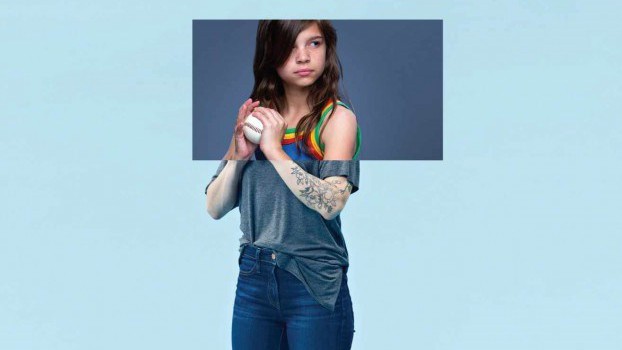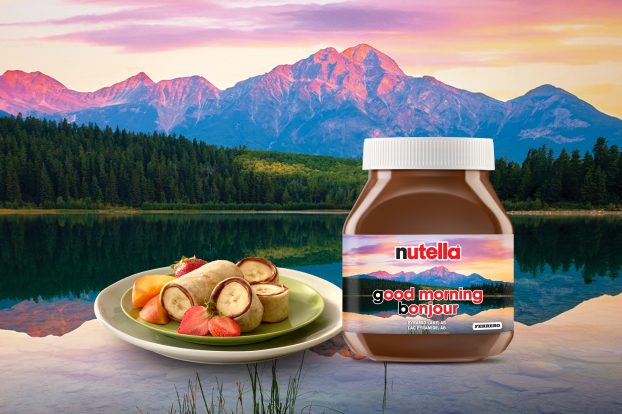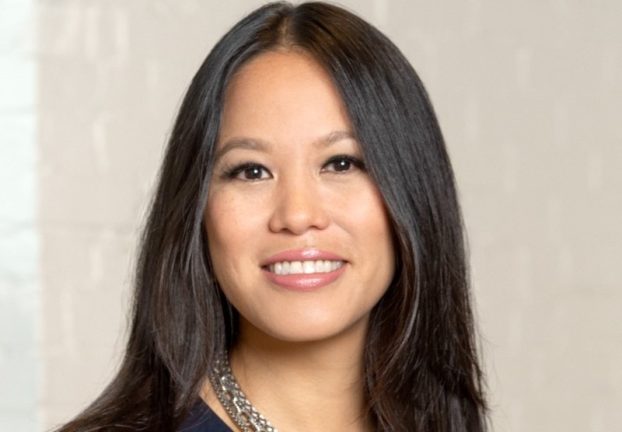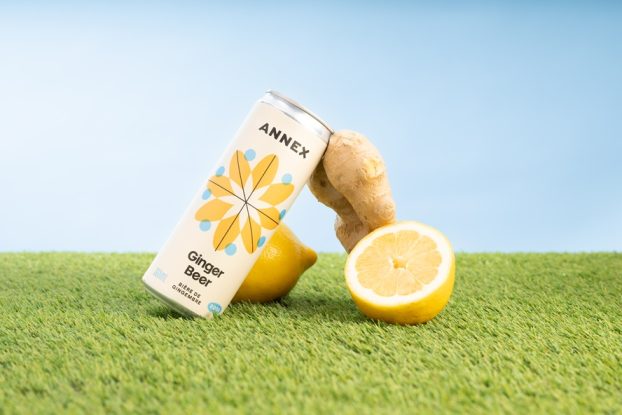What if you’re at the helm of an organization that not only has very deep roots, as the
second-oldest company in Canada and the oldest brewery in North America, but is also the Canadian market leader with $2 billion in annual sales?
What if it’s also part-owner of The Beer Store, which has a virtual monopoly on beer sales in Ontario, and the Montreal Canadiens, arguably the most hallowed team in the most hallowed sport in the land?
What if your biggest brand has been inextricably linked with patriotism and hockey and all things Canadian ever since the legendary ‘I Am Canadian’ campaign launched in 2000?
What if you already dominate the expanding light beer market?
When you’re that hot, what do you do next?
If you’re Kevin Boyce, president/CEO of Molson Canada, you get cold. Very cold.
The company recently launched a new beer dispensing unit (BDU) for its Molson Canadian and Coors Light brands called Sub Zero, which serves up draft that’s actually colder than freezing. As well, it’s unveiling new cans for Coors Light, on which thermochromatic ink turns blue when the beer reaches optimal drinking temperature. It’s all part of a back-to-basics strategy to suggest cold refreshment.
‘Sometimes it’s the simplest things,’ Boyce says. ‘In North America it’s always been about cold beer. So this direction is not something that’s super-intuitive, but we’re taking it and using it in a way that’s compelling to consumers.’
Not surprisingly, Sub Zero, with its enticing frost-covered pipes, is already a hit in its initial installations at 500 bars and restaurants, including Boston Pizza and Shoeless Joe’s outlets. ‘We’re seeing anything from a 15% to 20% improvement in through-puts relative to those outlets that don’t have it,’ says Molson Canada’s chief commercial officer, Mark Hunter. ‘At the same time, it’s building real conversational currency. People are sitting at the bar talking about draft beer again.’
Still, there’s more on the agenda for Boyce and Hunter than chilling their product. They’ve responded to the challenges of keeping Molson Canada – a division of Molson-Coors, the fifth-largest brewer in the world – number one in a complicated market that includes differing provincial regulations and tastes, international competition and health and social pressures by making some key marketing decisions.
‘We have a pretty complex portfolio of 88 brands,’ explains Hunter, who joined the company in 2005, after the merger with Coors. ‘One of the first jobs was to be clear on the part that was really meaningful for us – not only for today, but for tomorrow. We’ve called out 12 trademarks to focus on, and they cover all of the segments in the marketplace, from super premium through to the value segment. Those brands receive 100% of our investment, and by the end of this year they’ll account for about 85% of our volume. And they’re growing at about three times the rate of the market. So we’re really focused on a small group of sustainable long-term brands, and the trick is to make sure that they’re growing quickly enough to offset the decline on the others.
‘The second thing was to make sure that our brand positionings are really well-defined and compelling – complementary, but with as little overlap as possible.’
‘You don’t want to have so many brands that you become multi-personality, and 12 is at the top end,’ says Boyce. ‘Most beer companies would be happy with two or three, but we have a broader portfolio, which helps us grow. We have Heineken here, Corona in Ontario and the east, the Miller products…. We’re kind of a one-stop shop, which is neat.’
That brand-focused strategy was combined with the cold-beer innovations and the introduction of Rickard’s White. ‘It’s a wheat beer served with a slice of orange, because it has citrus zest and coriander, and the orange really brings out that flavour,’ Hunter says. ‘The only problem is that it’s going out of stock so quickly. It’s a great summer drink.
‘So we’re supporting our existing trademarks through a new dispensing system; we’re building a new flavour variant into one of our existing trademarks; and there’s a packaging innovation supporting one of our existing trademarks.’
In his position as chief commercial officer, which leaves him in charge of both sales and marketing, Hunter has also overseen a change in media strategy for Molson.
‘In 2000, about 80% of our media spend was on TV,’ he says. ‘In 2006 it was 60%, and in 2007 it’ll be 50%. So TV is still the biggest part of our spend, but it’s a significantly lower proportion of the total. There’s more emphasis now on non-traditional media. That might mean exploiting our sponsorships more effectively, but it’s also using relationship marketing to build our brands more effectively. We have more than a million names on our Molson Insider database across Canada, and we communicate regularly with individuals who have signaled a particular brand favourite, so we can talk to them about what the brand’s up to and get a two-way conversation going.’
That remarkably valuable database has been used to attract Insiders to Molson-sponsored events and to help publicize the introduction of Sub Zero stations by inviting Insiders to launch parties at Boston Pizza outlets across the country.
‘That drives traffic for our customers, and makes our drinkers feel valued,’ says Hunter. ‘They’re really looking for two-way communication. Staying ahead of that is our challenge, and we’ve changed our media mix to do that.’
Although the mediascape has shifted in his three years at Molson – one as president/COO, Molson North America, and two at his current job – Boyce says his relationship with Molson’s agencies hasn’t changed greatly. (The company uses 11 agencies for advertising, promotion and public relations, but the main ones are Zig, Cossette, Taxi and FCB.)
‘We still work with our agencies to talk about what’s relevant, what communication areas are working, what other brands are doing – and not necessarily beer brands, because some brands in packaged goods have done a good job of multimedia,’ says Boyce, who spent nearly 20 years at Unilever before making the move to Molson. ‘Like Axe – they’ve done a particularly good job. You look at what they’ve done and challenge the marketing people here to take that philosophy and make it relevant in our industry.’
To find out more about Molson’s methods, strategy sat down with Boyce at the company’s Toronto office.
What are the biggest changes you’ve seen in your time at Molson?
If you look at what’s happening among consumers – and each year there’s a new group of legal drinking age adults (LDAs) that we’re able to market to – it’s that the traditional forms of media that this company has always done well are no longer as useful. They have a place, but the way to reach the LDAs is not solely through TV and sponsorships, which was the other big driver in the past.
We’ve done a pretty exhaustive review of our sponsorships, and pruned them considerably. We’re still heavily associated with hockey, which we think is tremendously relevant to beer drinkers, but we have exited from car racing and other activities so that we’re more selective.
We’re spending an appropriate amount on television in both English and French Canada, we’re spending through different ways of having people experience our brands, be it on premise or whatever, but we’re also doing more outdoor, more radio and a substantial amount on the Internet.
How do you balance the international nature of the beer industry with the regional nature of the Canadian market?
Interestingly, beer is an international industry, but with many local brands and local tastes. The brand portfolio in Quebec is substantially different from the rest of Canada. Molson Canadian is the biggest brand in English Canada, but it’s hardly relevant in Quebec. Molson Dry and Molson Export and Coors Light are very big in Quebec – and of course Coors Light is also very big in English Canada. Taste profiles in Quebec are different, reflecting closer links to Europe. The trend to light beer in Quebec is accelerating, but it’s lower than it is in Ontario, and ales are bigger in Quebec than in Ontario. So what we advertise in Quebec is different. Our association with hockey is consistent across the country, as is our association with music. Our activation is broadly similar, but the branding and some of the local flavours are different.
What’s the rationale for putting all your efforts behind 12 brands?
Often as companies grow over time and through acquisition, which is the way Molson has done it, you find you have certain brands that have become less relevant, that you haven’t been able to put as much energy into. We look at the brands that are best positioned for today’s consumer and tomorrow’s consumer and think about where we’re going to get the greatest growth. We take those brands – and it’s the majority of the business, it’s not like we’re focusing on 20% – and we believe that if we put all our resources behind them, they will outpace the decline in the other brands. The net effect is that the company will grow its share.
How have you managed to capture 75% of the Canadian light beer market with Coors Light?
Coors Light has two massive benefits. First of all, it’s an exceptionally drinkable beer. And I think its advertising is a good example of using a nice outdoor campaign that we do in the summertime, plus the Maxim promotion [golf-themed parties at bars], so we’ve got a year-round portfolio of activities behind Coors Light. That has been consistent for years, and it’s that consistency and involving new types of communication vehicles together with a great beer that is obviously relevant to consumers, ’cause it’s had eight quarters of double-digit growth.
Is there an opportunity to market lighter beers to women, who are not traditionally the focus of beer campaigns? Is Rickard’s White perhaps an attempt to do that?
Rickard’s White is an interesting proposition because its taste profile is quite different than regular beer. So it will target consumers who don’t naturally go to beer. That may or may not be women. I think it’s going to attract both men and women. It has the capability of attracting consumers from other beverage alcohol products, like coolers or wine. It’s quite an intriguing taste. It doesn’t taste like a regular lager or ale, and that allows us to attract new consumers.
Most companies look at where the biggest consumption opportunities are, and they do tend in our industry to be more male. That doesn’t mean that some of our offerings don’t have strong relevance to females, though, and it doesn’t mean there aren’t opportunities for other companies. One of the things about craft brewers that I find interesting is that when they bring innovation, they force us to be better. It’s good to have competition in that sense. So there may be opportunities there for a craft brewer to carve out a niche for itself.
How did you get a million people to enroll in your Insider program?
One of the reasons is the relevance of our product category. We are a very popular category that people relate to. That gets them excited and involved, and as we interact with them there’s a greater opportunity through mobile marketing, direct marketing…whatever you want to call it, it’s a great opportunity to interact with them. We meet up with them at sporting events, music events, just to tell them about new product news. It’s a huge database, and it’s a great advantage.
And from there we can talk to them about future events, because we know what their interests are. And we can say: ‘Hey, this particular bar is a good customer of ours, maybe they’re having an event that we want to let you know about, because that’s good for us and for our customer.’ It’s a win-win scenario where we can drive our consumers into our customers’ restaurants and bars, or into a venue where we have something going on.
Your mobile concert promotion, where the Insider’s cellphone bar code became the venue ‘mobi-ticket,’ was the first time that technology has been used in North America. How important are innovations like that?
It’s a very interesting use of technology, and will only get more common. We just signed up with Facebook for a beer exclusive, which is very interesting for us. There are a lot of emerging technologies, and that’s only going to accelerate. When I look at my own children and how they communicate with their friends, it’s completely different from the way I communicate with mine. We need to make sure we’re adapting to these new communication vehicles because that’s the way we’ll stay close to consumers and build that bond over time.
Are there regulatory concerns related to the use of new technologies?
There are always going to be regulatory concerns. We want to be socially responsible, so we take all the steps we can to ensure we’re communicating with people of legal drinking age. In experimenting with new media, sometimes it goes in a different way than you intended. I’m not talking about underage users, I’m talking about how people can adapt it and maybe make fun of you or use it in a way that isn’t flattering to your brand. Well, that’s all part of learning. The trick is to adapt and move forward in a way that strengthens your brand ties.
What innovation are you most proud of?
I think breaking the mold of a company that went for the home run on its television advertising. That doesn’t mean we don’t still want great television advertising. When we say we’re spending 50% of our money on TV, that’s a huge amount of money. But going from being totally reliant on TV and big sponsorships to being much more individually focused has been a big change. It’s taken a few years and a whole bunch of people have been involved, and in some brands it’s working better than others. Some of our brands, when you look at the target market, you say: ‘Hmmm, maybe television is actually the right vehicle. Maybe outdoor or radio is better.’ But there has been a pretty big shift in a pretty short amount of time.
I think mentally being prepared to change is probably the biggest issue. Are you philosophically ready to depart from what has been successful? Because the time to change is actually when you are successful, not when you’re not successful. It’s easy to realize you have to change when you’re not successful, because it’s staring you in the face. The really great brands change when they’re on top of their game, because then they get to that next plateau and make it so much harder for the brands below them.
Where do you see opportunities for growth?
People describe the beer industry as a mature industry, and you can get fixated on low growth, cost-cutting and all the things any category can get consumed with. However, if you’re a brand like Coors Light, this isn’t a low-growth category. So I think changing the mind-set of people in the business is one of the most important things you can do, and that will come from anticipating where the growth is.
Is it from a Rickard’s White that kind of puts a twist on traditional beer? Is it the next generation of light, like ultra-light beer? Plus having the guts to stay with it. One of the things we haven’t done well in the past is stick with things. We’ve launched and cut our losses. And we have to do a better job at that.
Our super-premium brands are all doing wonderfully well, and the people who work on them don’t get the feeling it’s a low-growth industry. People who work on brands that are declining need to figure out how to turn those brands around, and it can be done. It’s not easy, but it’s possible.
What brands are you focusing on now?
One is Rickard’s White, which we tested in Quebec, and we were very encouraged by the response, so we’re rolling it out in the rest of the country in bars.
The other product we’re experimenting with is Creemore Springs. We bought it two years ago, and left them pretty well untouched. It’s all still brewed and packaged up there. It’s a small brewery with a really good beer that’s sold primarily on premise. We doubled the capacity up there, added an ability to produce cans and extended their storage capabilities, and that has enabled us to go outside of Ontario to get a feel for how it travels.
We’re extending it into Quebec and Alberta – not in a massive way, just trying to give people that experiential feel, and see how it does. We think it has the legs to travel. It continues to grow in Ontario, and the new Pilsner is doing very well. It’s early days, but we’re really encouraged by its results.
There’s a really quirky brand out West called Pilsner. The bottle has bunny rabbits on it, and you know the program Corner Gas, which is a bit quirky itself? Well, if you look closely, the beer they drink on Corner Gas is Pilsner. We’ve got some pretty neat radio campaigns out there for it. It’s an old brand that’s kind of so out that it’s in. That happens frequently enough, but it’s one of those where people discover it. It’s one of the ways that people show their difference, because beer drinking is like wearing a badge, it says a lot about you. So people are looking to signal that they’re not way out on the edge, but a little different, and Pilsner is an interesting option for them. We’re trying to give it a little bit of gas and see how it goes.
The Beer Store was a pioneer in recycling. Are there any other
eco-related innovations you’re doing?
We’ll be self-generating all our own carbon dioxide by the end of this year. And each of our bottles is used on average 16 times. I think it is the most heavily reused, recycled bottle in the world, and it’s good economics as well as a great environmental story.
Molson Canadian Day?
Molson recently capitalized on the name of its flagship Canadian brand
by launching the True Taste of Canada Day campaign, which included a new TV ad featuring comedian Jason Jones as well as interactive and online components.
As part of the run-up to the holiday, Canadian cellphone users were encouraged to be part of the biggest group ‘cheers’ in Canadian history by texting the word ‘Canada’ to a specified number before July 1, and ‘Cheers’ on Canada
Day itself.
As well, at the molsoncanadian.ca site, viewers could find games, information on Canada Day celebrations across the country, a countdown clock, a Molson Canadian Nation Facebook group, ‘Official Beer of Canada Day’ merchandise available at HBC and Zeller’s locations and information on a Countdown to Canada Day concert featuring Bedouin Soundclash in Ottawa. MD
Cooking up a snackable Stew
Molson is diving into online television with The Stew, a marriage between Coors Light and MTV Canada that launched in mid-June.
‘We realized there’s all this MTV content that’s perfect for the demo Coors Light is going after,’ says Brad Schwartz, MTV’s SVP/GM. ‘So we said, what if we took this content, popped it into little snackable bits, as opposed to full programs, and then integrated Coors Light events and branding within it?’
The result is a 30-minute show available on mtv.ca and mobile that consists of brief clips from shows that ‘only guys would understand,’ like Beavis &
Butt-head, Wonder Showzen, Jackass and Crank Yankers, plus original MTV short programming like Fuggy Fuggy and Sway’s Hip Hop Dictionary. As well, there will be content from Coors Light-sponsored events like Wakefest. The collection of clips will be refreshed weekly. There’s Coors Light branding on the MTV site, as well as 30-second spots created with Coors Light by MTV’s in-house creative department.
‘We love it, ’cause we’ve created a content offering for our audience that fits their vibe perfectly,’ says Schwartz. ‘The advertising integration is seamless, and we can put it on our broadband channel, we can embed it into Coors’ website and we can play it on mobile. And it’s the perfect mobile content ’cause it’s these little Jackass moments that last two minutes, or you can watch 30 minutes of it. I just think it’s one of the most innovative multimedia brand integrations that I’ve been part of.’ MD























